Beef cheeks, known for their tender, flavorful, and succulent qualities, are a highly regarded cut of meat favored by top-class chefs and featured in renowned restaurants. In this ultimate guide, we delve into everything you need to know about beef cheeks. From understanding what they are and where to buy them, to mastering the art of cooking them to perfection, get ready to indulge in the deliciousness of beef cheeks.
Key Takeaways:
- Beef cheeks are a highly sought-after cut of meat, cherished for their tenderness and flavor.
- They are small pockets of facial muscle meat from the cow’s cheeks.
- Beef cheeks are rich in connective tissue, including collagen and gelatin, resulting in a melt-in-your-mouth texture when slow-cooked.
- Due to limited supply and high demand, it’s recommended to pre-order beef cheeks from a butcher or online meat purveyor.
- Beef short ribs and beef oxtail can serve as substitutes for beef cheeks if they are not readily available.
What are Beef Cheeks?
Beef cheeks, also known as ox cheeks, are small pockets of facial muscle meat that come from the cheeks of the cow. There are two cheeks per animal, and each beef cheek weighs on average 12 oz to 14 oz. This muscle cut is hardworking and contains a lot of connective tissue, including collagen and gelatin. Due to the constant movement of the cheek muscles, beef cheeks are a flavorful and savory cut of meat that requires slow cooking to achieve tenderness.
| Beef Cheeks | |
|---|---|
| Source | Cow cheek muscle |
| Weight | 12 oz to 14 oz per cheek |
| Connective Tissue | Collagen and gelatin |
| Flavor | Savory and rich |
Where and How to Buy Beef Cheeks?
When it comes to purchasing beef cheeks, finding them can be a bit challenging due to their limited supply and high demand. You won’t typically find beef cheeks readily available at mainstream stores or local butchers. However, there are a few steps you can take to get your hands on this delectable cut of meat.
Your best option is to pre-order beef cheeks from a reputable butcher or online meat purveyor. By placing a pre-order, you can secure your supply and ensure that you don’t miss out on the opportunity to enjoy this culinary delight.
It’s important to keep in mind that beef cheeks are sold by weight, so when purchasing, make sure to consider the number of servings you’ll need. As a general guideline, plan for one beef cheek per person.
Now, let’s take a look at a comprehensive table that summarizes the key points for buying beef cheeks:
| Where to Buy | How to Buy | Serving Recommendation |
|---|---|---|
| Reputable butcher or online meat purveyor | Pre-order in advance | One beef cheek per person |

Now that you know how and where to buy beef cheeks, let’s delve deeper into their flavor and texture in the next section.
Flavor and Texture of Beef Cheeks
Beef cheeks are not only known for their tender and succulent nature but also for their rich flavor and unique texture. When slow-cooked to perfection, these cuts of meat melt in your mouth, offering a delightful culinary experience. The presence of connective tissue and sinew in beef cheeks gives them a soft mouthfeel, further enhancing their appeal.
One of the key factors that contribute to the rich flavor of beef cheeks is their high concentration of collagen and gelatin. As these proteins break down during the slow cooking process, they infuse the meat with a deep, savory taste that is unlike any other cut. This rich flavor profile makes beef cheeks a favorite choice among chefs in top-class restaurants.
Additionally, the unique texture of beef cheeks adds to their appeal. Due to the connective tissue, including collagen and sinew, these cuts have a tender and melt-in-your-mouth consistency. When cooked properly, the beef cheeks offer a sublime balance between tenderness and meatiness, creating a memorable dining experience.
Furthermore, the soft mouthfeel of beef cheeks adds another layer of enjoyment. The texture of these cuts is incredibly delicate, allowing them to be easily enjoyed without any chewy or tough bits. Each bite of beef cheeks is a pleasure, gently yielding to the bite and providing a satisfying sensory experience.
Beef cheeks also have the remarkable ability to absorb flavors from braising liquids. Whether you choose to braise them in red wine, broth, or other flavorful liquids, the beef cheeks will soak up the deliciousness, resulting in a dish that is bursting with rich and complex flavors.
To give you a visual understanding of the rich flavor and unique texture of beef cheeks, take a look at the image below:
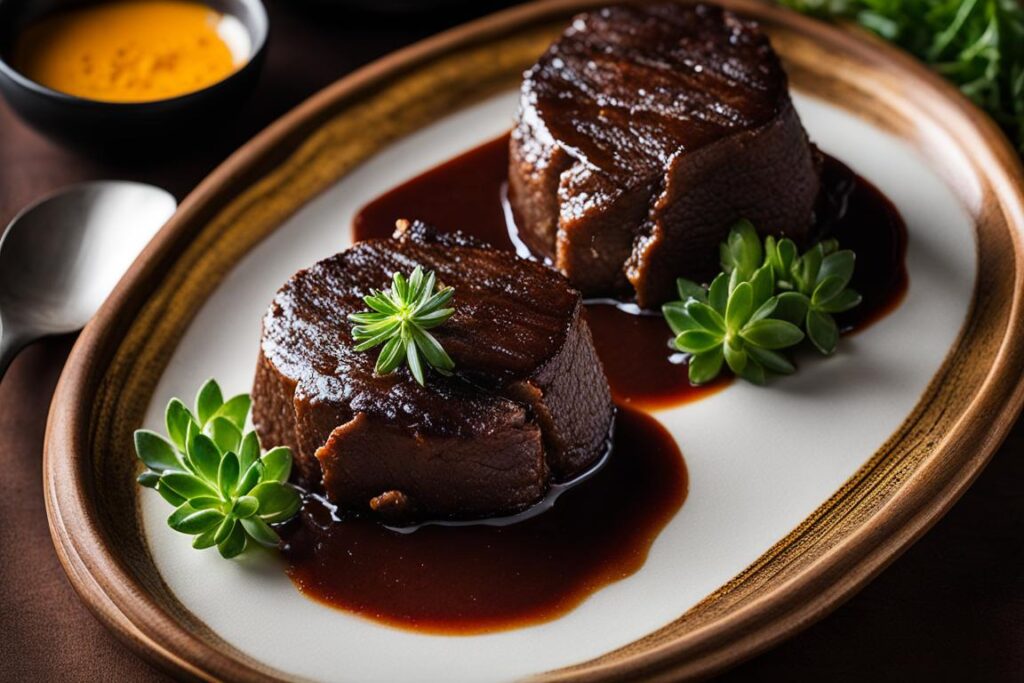
As you can see, the beef cheeks are beautifully cooked, showcasing their tender texture and mouthwatering appeal. With their rich flavor, unique texture, and soft mouthfeel, beef cheeks are truly a cut above the rest.
Substitutes for Beef Cheeks
While beef cheeks are the king of alternative cuts, there are substitutes available if you can’t find them. Beef short ribs and beef oxtail are two cuts that have a similar texture and flavor profile when slow-cooked. While they may not be as rich as beef cheeks, they can still deliver a delicious and tender result.
Comparison of Beef Cheeks, Beef Short Ribs, and Beef Oxtail
| Criteria | Beef Cheeks | Beef Short Ribs | Beef Oxtail |
|---|---|---|---|
| Texture | Moist and tender | Tender and juicy | Rich and gelatinous |
| Flavor | Deep, savory, and robust | Rich and meaty | Beefy and flavorful |
| Cooking Time | Long, slow cooking required | Long, slow cooking required | Long, slow cooking required |
| Availability | Challenging to find | Readily available | Readily available |
When considering substitutes for beef cheeks, keep in mind that the texture, flavor, and cooking time may differ slightly. However, both beef short ribs and beef oxtail can still provide a satisfying eating experience when prepared with slow-cooking methods. These cuts can be braised or stewed to achieve tenderness, resulting in flavorful dishes that will impress your guests.
Experiment with different recipes and techniques to bring out the best in beef short ribs and beef oxtail. Whether you choose to braise them in a rich sauce, slow-cook them in a flavorful broth, or incorporate them into stews and soups, these substitutes can offer a delicious alternative to beef cheeks.

Don’t have beef cheeks? No problem! Beef short ribs and beef oxtail can step up to the plate and deliver a mouthwatering dining experience. Their tender texture and rich flavor make them excellent substitutes in your slow-cooked dishes.
How to Cook Beef Cheeks?
Cooking beef cheeks is a delicious and rewarding process that involves a two-step method to achieve the ultimate tenderness and flavor. Here’s a step-by-step guide on how to cook beef cheeks:
- Browning and Searing: Begin by browning the beef cheeks in a hot skillet or Dutch oven. This process helps develop a rich and caramelized flavor by Maillard reaction, resulting in a more complex taste. Sear the beef cheeks on all sides until they develop a golden-brown crust.
- Braising or Slow Cooking: Once the beef cheeks are browned and seared, it’s time to braise or slow cook them to perfection. Braising involves cooking the beef cheeks in a flavorful liquid, such as red wine, beef broth, or a combination of herbs and spices. The slow cooking process allows the connective tissues and collagen present in the beef cheeks to break down slowly, resulting in a tender and succulent texture.
- Cooking Time: The cooking time for beef cheeks can vary depending on the cooking method and the size of the beef cheeks. Generally, beef cheeks require several hours of slow cooking to achieve the desired tenderness. Here’s a breakdown of cooking times based on common methods:
| Cooking Method | Cooking Time |
|---|---|
| Oven | 3-4 hours at 325°F (163°C) |
| Stovetop | 4-5 hours on low heat |
| Pressure Cooker | 1-1.5 hours on high pressure |
To ensure that the beef cheeks are cooked to perfection, it’s recommended to check their tenderness periodically during the cooking process. They should be easily pierced with a fork and have a melt-in-your-mouth texture.
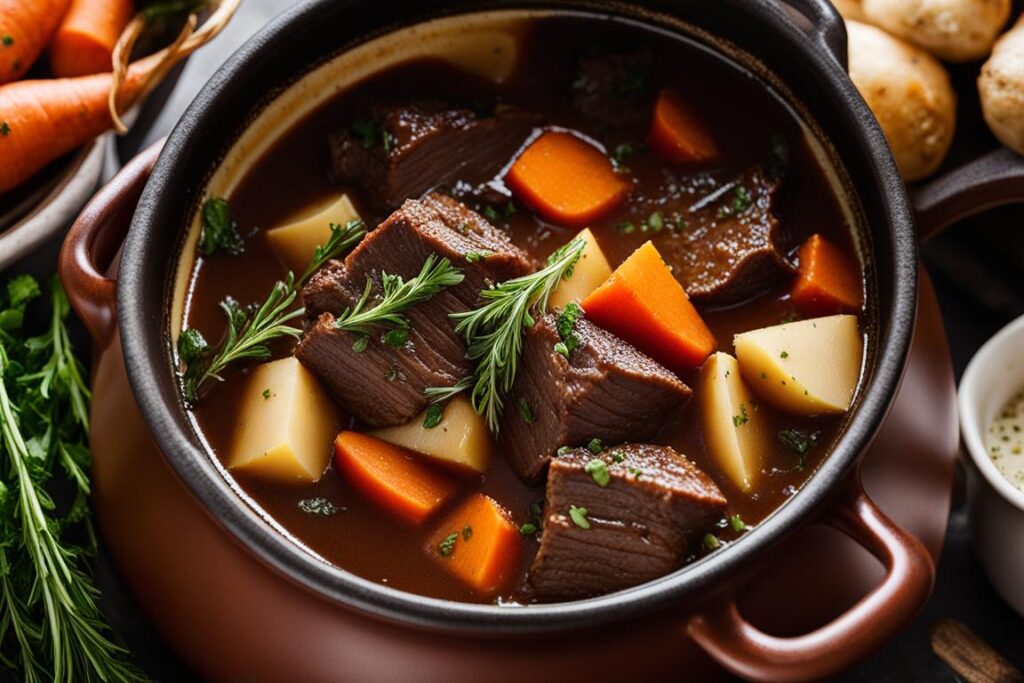
Slow cooking beef cheeks allows their rich flavor and tender texture to shine. The combination of browning, searing, and braising creates a succulent dish that is perfect for any occasion.
Top 5 Beef Cheek Recipe Ideas
Beef cheeks are incredibly versatile and can be used in a variety of delicious recipes. Here are five recipe ideas that will showcase the tenderness and flavor of beef cheeks:
1. Barbacoa Tacos
Barbacoa tacos are a popular Mexican dish that features slow-cooked beef cheeks seasoned with aromatic spices. The cheeks are tender and flavorful, making them the perfect filling for soft tortillas. Add your favorite toppings, such as fresh salsa, guacamole, and cilantro, for a mouthwatering taco experience.
2. Beef Cheeks in Red Wine Sauce
Elevate your beef cheeks to new heights by braising them in a rich red wine sauce. The combination of the tender meat and the robust flavors of the sauce creates a delectable dish. Serve the beef cheeks and sauce over creamy mashed potatoes or polenta for a hearty and satisfying meal.
3. Beef Cheek Ragu
Indulge in the comfort of a classic Italian dish with a twist by preparing a beef cheek ragu. Slow-cooked beef cheeks are transformed into a rich and flavorful sauce that pairs perfectly with al dente pasta. Top it off with some grated Parmesan cheese and fresh basil for a truly satisfying meal.
4. Beef Cheek Sliders
Impress your guests with mini beef cheek sliders. The tender and succulent beef cheeks are served on soft slider buns, topped with your favorite accompaniments such as tangy pickles, melted cheese, and a zesty aioli. These sliders are perfect for parties or as a gourmet twist on a classic burger night.
5. Beef Cheeks with Beer served with Mashed Potatoes
Combine the richness of beef cheeks with the malty flavors of beer in this hearty dish. Slow-cooked beef cheeks are braised in a flavorful beer-based sauce, resulting in tender meat with a depth of flavor. Serve the beer-braised beef cheeks with creamy mashed potatoes and a side of roasted vegetables for a satisfying and comforting meal.
These recipe ideas are just the beginning when it comes to the culinary possibilities of beef cheeks. With their tender texture and rich flavor, beef cheeks can be the star ingredient in an array of dishes that will impress your family and friends.
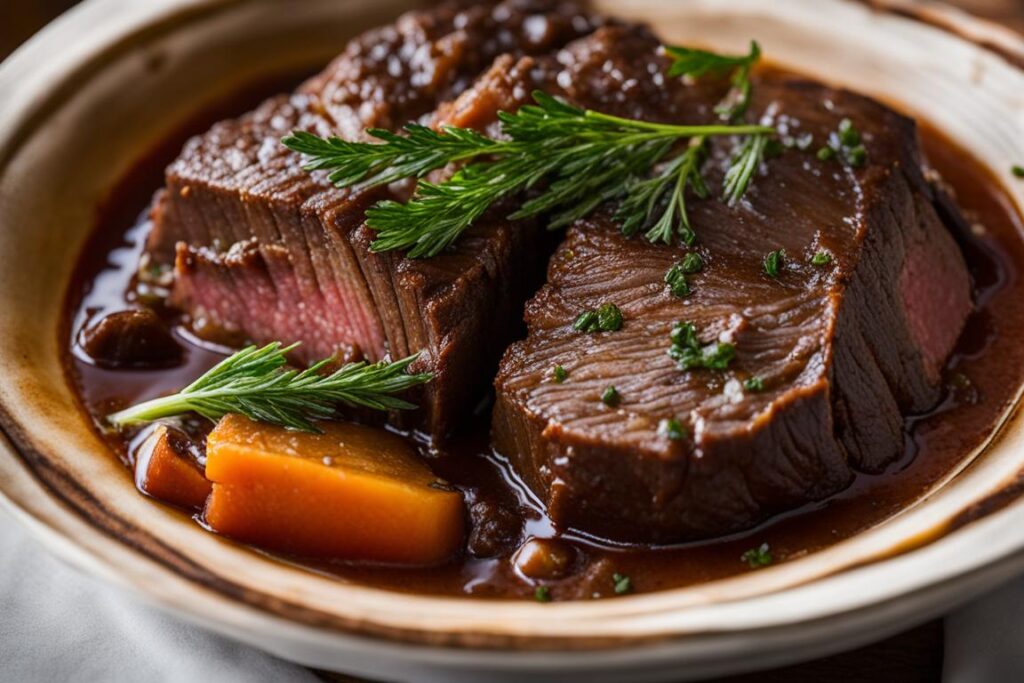
| Recipe | Main Ingredients | Cooking Method |
|---|---|---|
| Barbacoa Tacos | Beef Cheeks, Spices, Tortillas | Slow-cooking, Shredding |
| Beef Cheeks in Red Wine Sauce | Beef Cheeks, Red Wine, Aromatics | Braising, Simmering |
| Beef Cheek Ragu | Beef Cheeks, Tomatoes, Herbs | Braising, Simmering |
| Beef Cheek Sliders | Beef Cheeks, Slider Buns, Toppings | Slow-cooking, Assembling |
| Beef Cheeks with Beer served with Mashed Potatoes | Beef Cheeks, Beer, Mashed Potatoes | Braising, Simmering, Boiling |
Beef Cheeks Nutrition
Beef cheeks are not only a flavorful and succulent cut of meat, but they also offer numerous nutritional benefits. Here is a breakdown of the essential nutrients you can find in beef cheeks:
| Nutrient | Amount per 100g serving |
|---|---|
| Protein | 25g |
| Collagen | High content due to connective tissues |
| Vitamins | Zinc, Vitamin B12, Vitamin B3 |
| Minerals | Iron |
Protein is an essential macronutrient needed for muscle repair and growth. Beef cheeks provide a generous amount of protein, making them an excellent choice for individuals looking to increase their protein intake.
Collagen, found abundantly in beef cheeks due to the presence of connective tissues, offers various health benefits. It promotes healthy skin, supports joint health, and improves gut health.
In addition to protein and collagen, beef cheeks contain essential vitamins and minerals. Zinc plays a crucial role in immune function, wound healing, and protein synthesis. Vitamin B12 is essential for red blood cell production and neurological function, while Vitamin B3 (niacin) is involved in energy production and the maintenance of healthy skin.
Beef cheeks also provide iron, a mineral necessary for oxygen transport, energy production, and the formation of red blood cells.
It is important to note that the exact nutritional content may vary based on the quality and cooking method of the beef cheeks.
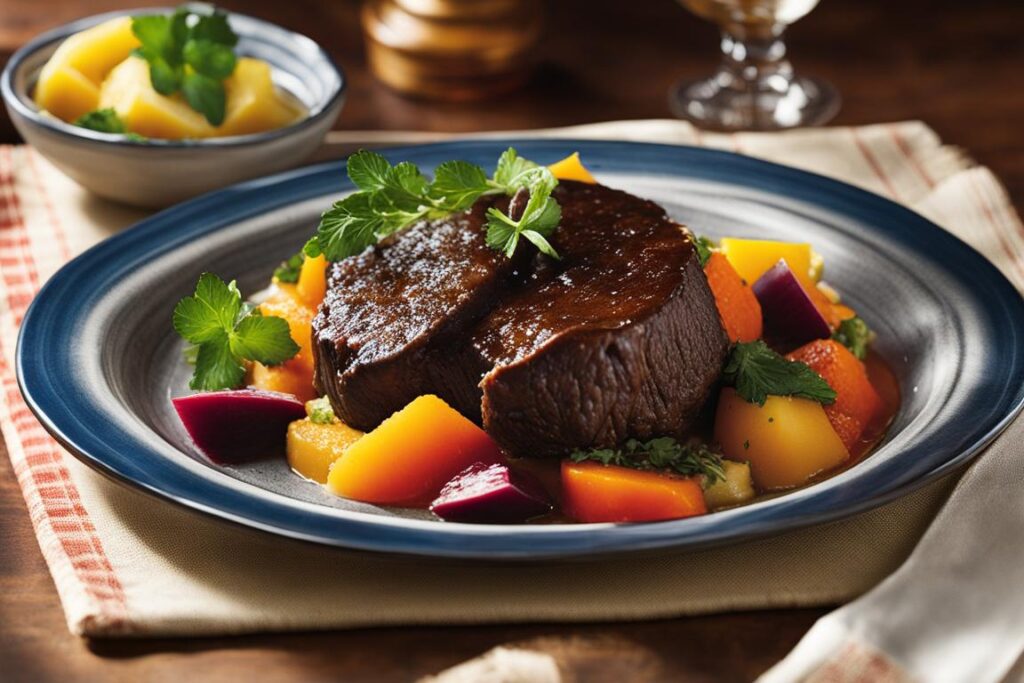
Key Takeaways:
- Beef cheeks are a rich source of protein and collagen due to their connective tissues.
- They also contain essential vitamins and minerals like zinc, Vitamin B12, and Vitamin B3.
- Iron found in beef cheeks supports various bodily functions.
Conclusion
Beef cheeks are a flavorful and succulent cut of meat that deserves more recognition. With their melt-in-your-mouth texture and rich flavor, beef cheeks offer a unique and satisfying eating experience. Whether you prefer to braise them in red wine or try one of the top recipe ideas mentioned earlier, beef cheeks are sure to impress your taste buds.
Don’t miss out on the opportunity to savor the tenderness and deliciousness of beef cheeks in your next culinary adventure. Their tender and succulent nature makes them a perfect choice for those who appreciate a flavorful and hearty meal. Whether you’re planning a special occasion or simply want to treat yourself to a memorable dining experience, be sure to include beef cheeks on your menu.
In conclusion, beef cheeks are not only delicious but also versatile. They can be used in a variety of recipes and cooking methods, ranging from slow-cooked braises to flavorful tacos or sliders. The tender and flavorful nature of beef cheeks makes them a standout choice for any meat lover. So go ahead, explore the world of beef cheeks, and elevate your culinary creations.
Also Read : Beijing Beef: Savor the Authentic Chinese Flavor!
FAQ
Q: What are beef cheeks and why are they considered tender?
A: Beef cheeks are cuts of meat from the facial muscles of a cow, which is typically a tough cut of meat. However, when slow-cooked, the collagen in the meat breaks down, resulting in incredibly tender and flavorful beef cheeks.
Q: How can I prepare the beef cheeks in a slow cooker?
A: To prepare beef cheeks in your slow cooker, start by trimming any excess fat from the cheeks. Then, season them with salt and pepper, and sear them in a hot pan with a bit of olive oil. Place the seared cheeks in the slow cooker along with onion, garlic, thyme, and stock. Cook on low for 8 hours until the meat is fork-tender.
Q: What are some tips for cooking beef cheeks to ensure they remain tender?
A: For the most tender beef cheeks, it’s crucial to cook them slowly at a low temperature. Using a slow cooker or braising the cheeks in a large, heavy-based pot will help achieve the desired tenderness.
Q: Can leftover beef cheeks be used for other recipes?
A: Absolutely! Leftover beef cheeks can be used in various recipes such as beef stew, sandwiches, or even as a topping for salads. The tender, flavorful meat can add depth to a range of dishes.
Q: What are some common ingredients used when cooking beef cheeks?
A: Common ingredients for cooking beef cheeks include salt, pepper, onion, garlic, thyme, stock, and olive oil. These ingredients help enhance the flavor of the meat during the slow cooking process.
Q: How do I ensure that the beef cheeks are well-seasoned?
A: To ensure the beef cheeks are well-seasoned, generously season them with salt and pepper before searing them in a hot pan. This initial seasoning will help the meat develop a flavorful crust.
Q: What are some recommended reader interactions for cooking beef cheeks?
A: Readers can interact by sharing their favorite slow-cooked beef cheek recipes, tips for achieving the perfect tenderness, or innovative ways to use leftover beef cheeks in other dishes.
Q: Are beef cheeks suitable for individuals following low-carb diets?
A: Yes, beef cheeks can be a suitable option for individuals following low-carb diets, as they are a protein-rich cut of meat. When paired with low-carb sides such as mashed cauliflower, they can make a delicious, keto-friendly meal.
Q: How can I use beef cheeks in a simple recipe?
A: Beef cheeks can be used in a simple recipe by seasoning them with salt, pepper, and other preferred herbs and spices, then slow-cooking them in a flavorful broth until they are tender enough to be easily shredded and enjoyed on their own or as part of a sandwich or salad.
Q: What are some imagery uses for beef cheeks beyond general meals?
A: Beyond general meals, beef cheeks can be used as a delicacy for special occasions or to create impressive dishes. They are versatile and can be the star of warm, comforting dishes like pot roast or braised beef cheeks with red wine, representing elegance and delicious flavors.
Source Links
- https://www.bonappeteach.com/smoked-beef-cheeks-recipe/
- https://www.epicurious.com/recipes/food/views/braised-beef-cheeks-107803
- https://truorganicbeef.com/blogs/beef-wiki/beef-cheeks-complete-guide


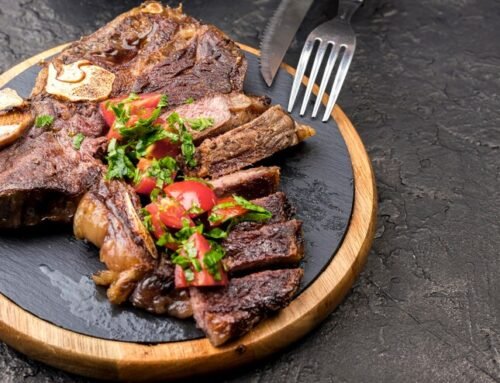
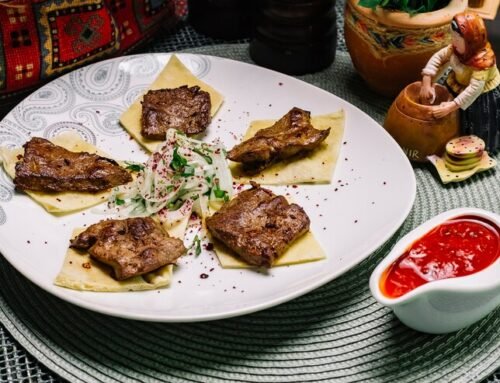

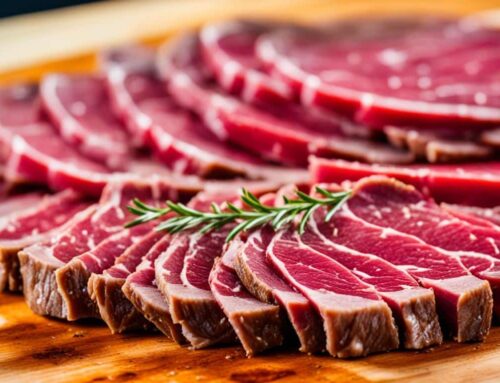
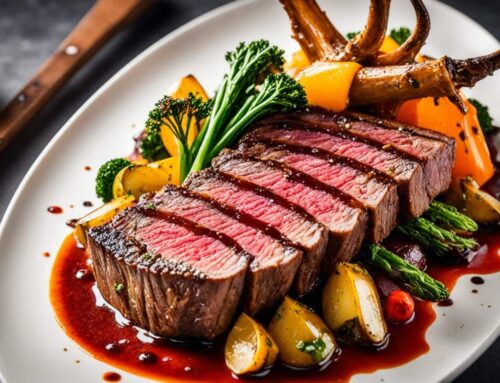
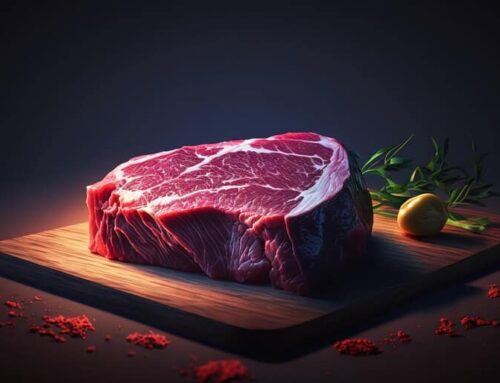
Leave A Comment